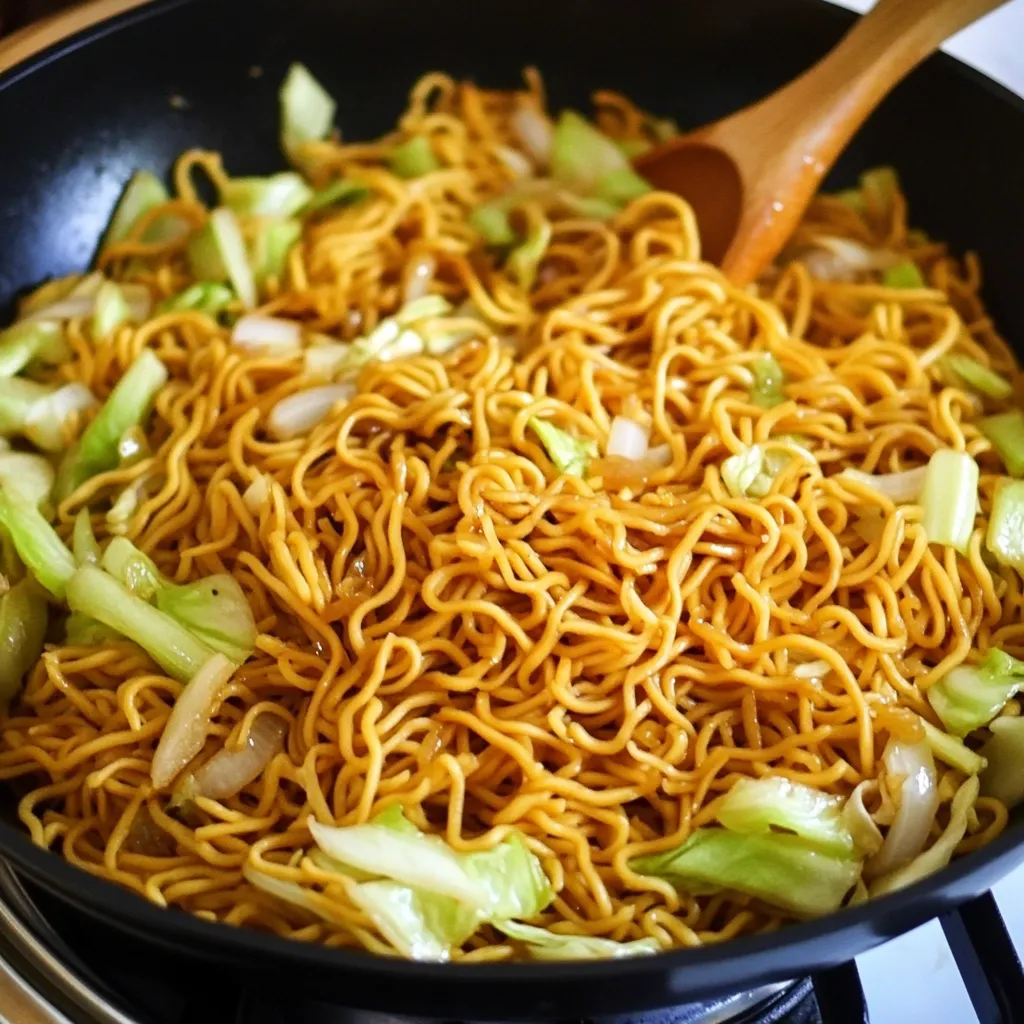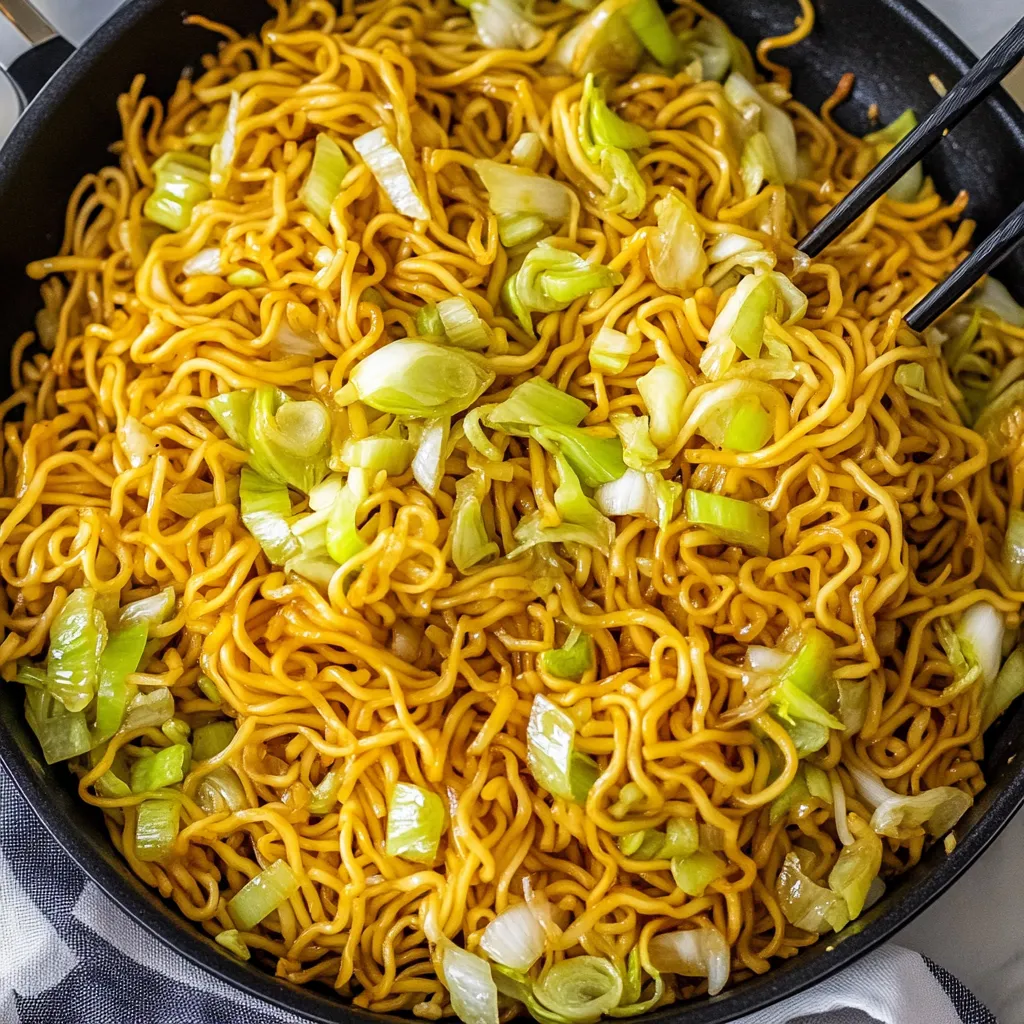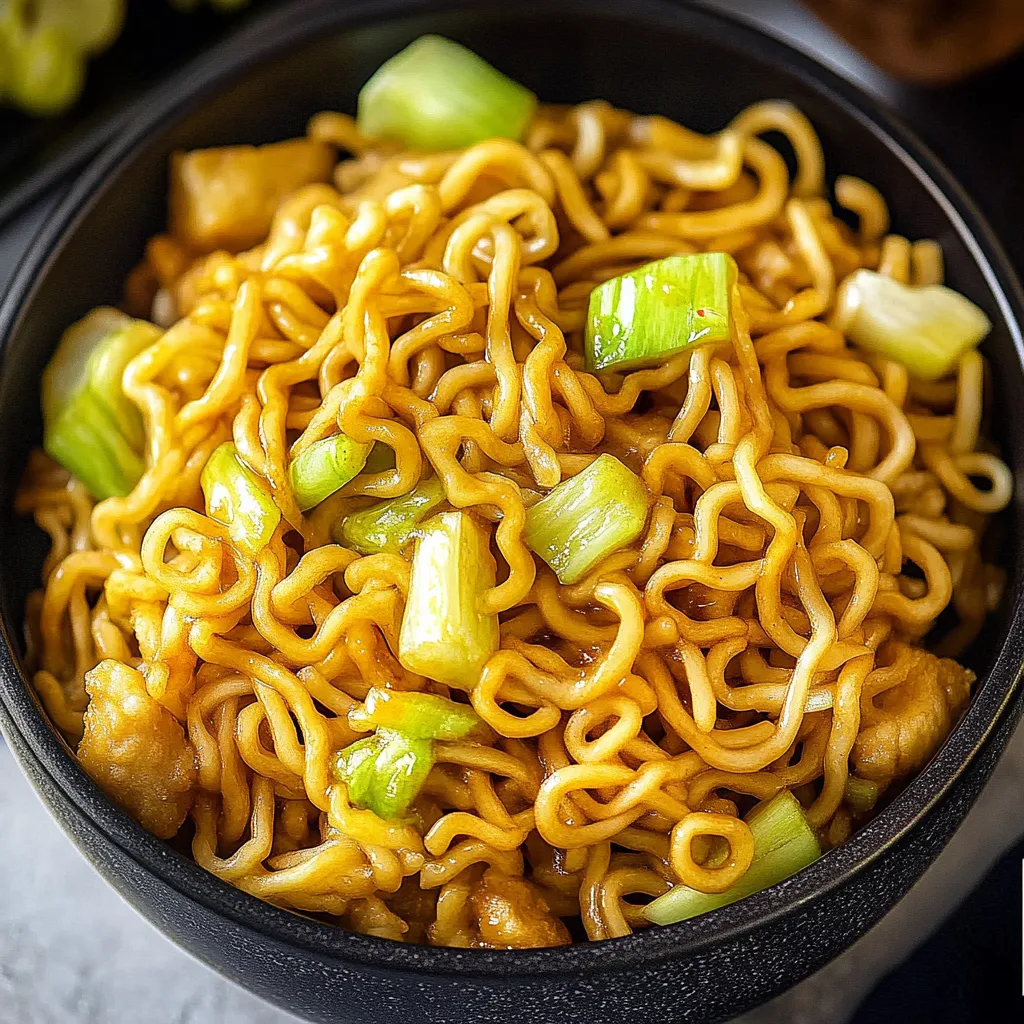 Pin it
Pin it
A plate of steaming, perfectly stir-fried noodles with tender-crisp vegetables and a savory brown sauce - that's the magic of Panda Express Chow Mein recreated in your own kitchen. This beloved dish captures the essence of Chinese-American cuisine while being surprisingly simple to master at home, delivering that perfect balance of textures and flavors that keeps you coming back for just one more bite.
Last weekend, I made this for a potluck, and even my friend's picky 8-year-old asked for seconds. The secret? Getting that perfect noodle texture through proper stir-frying technique.
Essential Ingredients and Selection
- Yakisoba or Chow Mein Noodles: Look for fresh ones in the refrigerated section - they provide the authentic texture. In a pinch, dried lo mein noodles work well too
- Cabbage: Choose firm, fresh cabbage with crisp leaves - it adds the signature crunch and subtle sweetness when cooked
- Celery: Select bright green stalks that snap easily - older, rubbery celery won't give you that crucial texture contrast
- White Onion: The foundation of flavor - its natural sweetness develops beautifully when caramelized
- Soy Sauce: Use regular, not light soy sauce, for that deep umami flavor and proper color
- Brown Sugar: Just a touch balances the savory elements and helps create that perfect caramelization
Step-by-Step Instructions
- Step 1: Noodle Preparation
- - If using dried noodles, cook them 1 minute less than package directions
- Drain thoroughly and toss with a tiny bit of oil to prevent sticking
- Let them cool slightly before stir-frying for better texture - Step 2: Vegetable Preparation
- - Slice cabbage into thin, uniform strips for even cooking
- Cut celery on a diagonal for maximum surface area
- Slice onion into half-moons of consistent thickness - Step 3: The Perfect Stir-Fry
- - Heat your wok or large skillet until very hot
- Add vegetables in the correct order: onions first, then celery, finally cabbage
- Toss noodles in last, keeping everything moving constantly
- Add sauce gradually, allowing it to caramelize between additions
 Pin it
Pin it
I've found that the celery is actually the unsung hero of this dish - it provides that subtle crunch and fresh flavor that makes the restaurant version so addictive. My grandmother always said good Chinese cooking is all about the sound of the vegetables when you bite into them.
After years of perfecting this recipe, I've come to appreciate how a few simple ingredients can create such complex flavors. The key is respecting each component and giving it the attention it deserves during the cooking process. When done right, this homemade version might just make you forget about takeout altogether.
 Pin it
Pin it
Frequently Asked Questions
- → Where can I find Yakisoba noodles?
- Look in the produce section of your grocery store, not the Asian food aisle. They're usually sold in a pack of three 5.6-ounce packages together.
- → Can I add sesame oil?
- Yes, but use it sparingly as it can quickly overpower the dish. Just a few drops will add depth of flavor.
- → Can I add other vegetables?
- While this recipe aims to copy Panda Express's version, you can add carrots, bean sprouts, or other vegetables for extra nutrition.
- → Why are my noodles breaking?
- This usually happens from overcooking. Only heat the noodles through - they should be warm but still firm.
- → Can I make this ahead of time?
- Yes, but it's best served fresh. If storing, keep refrigerated and reheat gently to prevent the noodles from becoming mushy.
